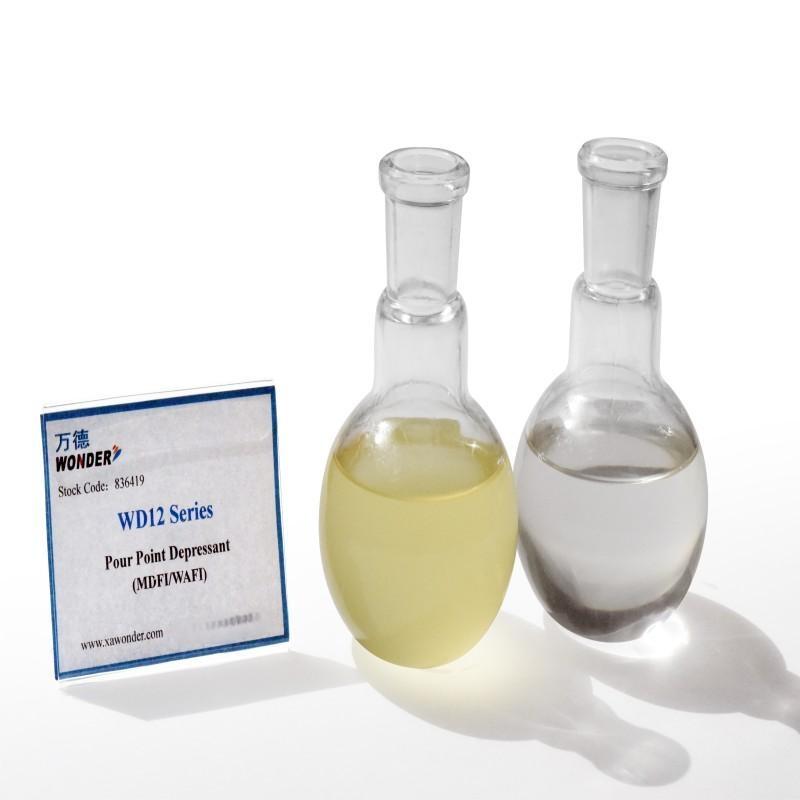-
Categories
-
Pharmaceutical Intermediates
-
Active Pharmaceutical Ingredients
-
Food Additives
- Industrial Coatings
- Agrochemicals
- Dyes and Pigments
- Surfactant
- Flavors and Fragrances
- Chemical Reagents
- Catalyst and Auxiliary
- Natural Products
- Inorganic Chemistry
-
Organic Chemistry
-
Biochemical Engineering
- Analytical Chemistry
-
Cosmetic Ingredient
- Water Treatment Chemical
-
Pharmaceutical Intermediates
Promotion
ECHEMI Mall
Wholesale
Weekly Price
Exhibition
News
-
Trade Service
Since mid-June, under the suppression of the Fed's aggressive interest rate hikes, international oil prices have continued to fall, with the largest decline in the range of more than 30%.
In the fourth quarter, OPEC+ announced a sharp production cut to support oil prices, the fundamentals of the crude oil market improved significantly, and the price center of Brent crude oil futures rose to around $95 / barrel, but macro bearishness continued to suppress the space
above oil prices.
Until the Fed's attitude does not turn or the demand side does not improve, oil prices are expected to run mainly
in range.
OPEC+ strengthens supply management
At its ministerial meeting in early October, OPEC+ had proposed a 2 million b/d cut, which briefly supported
oil prices.
It is worth noting that the 2 million b/d production reduction benchmark is the August 2022 production quota of each country, considering that most countries in OPEC+ have insufficient capacity, according to our calculations, the actual reduction is 800,000-850,000 b/d, of which Saudi Arabia still bears most of the actual production reduction tasks, accounting for about 50%
of OPEC+ production reduction.
Kuwait, the United Arab Emirates and Iraq also cut production by 100,000-150,000 b/d
each.
According to OPEC+, the next ministerial meeting is scheduled for December 4, the day before the United States plans to impose an oil price cap on Russia, OPEC+ will take corresponding actions according to the final measures of the US price limit to ensure as much control
of crude oil supply as possible.
Saudi Arabia has strong demands on oil prices and intends to continue to support oil prices
through production cuts.
Since the price war in 2020, Saudi Arabia has taken the initiative to overcut production many times to ensure that oil prices are in the medium to high range
.
Some small and medium-sized oil-producing countries have limited upstream expenditure, insufficient crude oil production capacity, and it is difficult to release
production normally.
OPEC-10 crude oil production increased by 148,000 b/d month-on-month in September, a difference of 1.
285 million b/d
from theoretical production, the data showed.
Angola overcut production by 344,000 b/d, Nigeria overcut production by 742,000 b/d, and the production capacity problem of small and medium-sized oil-producing countries is still prominent, and it is difficult to fundamentally improve
in the short term.
Among the exempt countries, Libya has an unstable domestic situation, and due to strikes and military operations, it is difficult to maintain crude oil production at a normal level
.
Venezuela has long been under sanctions, upstream capital expenditure is insufficient, crude oil production capacity has fallen from 3 million b/d to the current 800,000 b/d, and there is also limited
room for production increase.
There has been no substantial progress in the Iranian nuclear negotiations, and the return of crude oil supplies to the market is far away
.
OPEC crude oil supply is generally tight
.
b Russian crude oil exports may decline further
Russian oil exports fell 230,000 b/d month-on-month to 7.
5 million b/d
in September, IEA data showed.
Crude oil exports fell by 260,000 b/d, while refined oil exports edged up by 30,000 b/d
.
Exports to Europe fell 390,000 b/d month-on-month to 2.
6 million b/d, and Europe's share of Russian oil exports fell to 35%
from 50% at the start of the year.
In addition, Russia continues to replace its share of exports to Europe by exporting to Asian countries, with exports to India largely stable at 1 million b/d in September, and total exports to China and India 160,000 b/d
higher than Europe's.
From next year, the EU will completely stop importing Russian crude oil by sea, but since the outbreak of the Russian-Ukrainian conflict for eight months, Europe's cumulative crude oil imports to Russia have fallen by only 800,000 barrels / day, and there are still 1.
3 million barrels / day of crude oil to be replaced
.
According to the monthly reports of OPEC, EIA and IEA, the month-on-month impact of sanctions on Russian crude oil supply in the fourth quarter may be 300,000 b/d, which is relatively limited
.
After the sanctions are officially implemented in the first quarter of next year, the three major institutions expect Russian supply to decrease by 1 million barrels per day
month-on-month.
Judging from the situation in the first three quarters of this year, Russia is still expected to continue to transfer most of its exports through Asia, taking into account factors such as shipping and insurance, the total export may decline to a certain extent, but the specific extent remains to be seen
.
c Capital expenditure constraints have led to slow U.
S.
production growth
In 2022, U.
S.
crude oil production has basically not increased, and the later increase is also expected to be limited
.
EIA data showed that in the week ended October 28, U.
S.
crude oil production was 11.
9 million b/d, and the cumulative increase during the year was only 200,000 b/d, which is much lower than the same period
in 2021.
The EIA forecast for U.
S.
crude oil production in October to average 11.
75 million b/d in 2022, and based on current production, U.
S.
crude oil production is expected to stabilize at current levels
from November to December.
However, in this monthly report, the EIA sharply lowered its forecast for U.
S.
crude oil production in 2023, from 12.
65 million b/d in the September report to 12.
35 million b/d
.
On the one hand, the reason is that the forecast for oil prices in 2023 has been lowered; On the other hand, upstream companies are more cautious in capital expenditure, which continues to restrict the growth rate of
US crude oil production.
We counted the financial data of 30 North American shale oil upstream companies, and the capital expenditure of the 30 companies in the second quarter totaled $12.
934 billion, down 3.
5% month-on-month and up 48.
7% year-on-year, but capital expenditure was partially offset
by rising costs.
From the perspective of Capex/CFO, the importance of capital expenditure for shale oil upstream companies continues to decline, with the Capex/CFO of 30 upstream companies falling to 33.
8% in the second quarter, down 16.
5 percentage points month-on-month and 10.
9 percentage points year-on-year, the lowest level
since 2015.
In addition, factors such as labor and cost are also constraining the increase in U.
S.
crude oil production
.
According to the Dallas Fed, in June, nearly 50 percent of CEOs of upstream companies surveyed identified labor shortages, rising costs and supply chains as the most serious problems
facing their companies.
94% of companies believe that supply chains affect their crude oil production, and half of them believe that their production has been severely affected; And 66% of companies believe that supply chain problems will take more than a year to get better
.
The September survey showed no significant improvement in the problem, with upstream companies still reporting that supplier costs and delivery wait times are increasing
.
For the expected increase in production in 2022, about 35% of companies expect it to be below 800,000 b/d, and about 40% are expected to be between 800,000 and 1 million b/d, which is basically in line
with the EIA's expectations.
The continued upward trend in oil prices intensified inflationary pressures in the United States, Biden's visit to Saudi Arabia in July to ask OPEC+ to increase production but with little effect, and the announcement of OPEC+ 2 million b/d production cuts in early October once again caused dissatisfaction
in the United States.
The Biden administration immediately announced that it would dump 10 million barrels in November (part of the May 180 million barrel dump plan).
The contradiction between the United States and OPEC+ is gradually deepening, and the geopolitical game may intensify
in the later stage.
On October 19, the U.
S.
government again said it would sell 15 million barrels of strategic reserves
in December.
Since September last year, the US strategic reserve has continued to decline, and the pace of strategic reserve selling has accelerated since May this year, approaching 1 million barrels per day since May and now completing 165 million barrels of the 180 million barrels
plan.
As of the end of October, U.
S.
SPR was close to 400 million barrels, the lowest level in 40 years and just 25 days of
consumption in the continental United States.
In the later stage, the US strategic reserve is already at a low level, and the space for continued storage after the completion of this round of 180 million barrels is limited, and the marginal negative for oil prices continues to weaken
.
And the US Department of Energy said that it will replenish strategic reserves in the range of WTI crude oil in the range of 67-72 US dollars / barrel to provide support
for the bottom of oil prices.
D There is still a gap in crude oil supply in the fourth quarter
Although the downward pressure on the European and American economies and the decline in European natural gas prices have restrained winter crude oil demand to a certain extent, considering the OPEC+ production cut, the crude oil market in the fourth quarter is still in short supply
.
Due to pessimistic expectations for the economic environment in Europe and the United States, the three major institutions recently revised
down global crude oil demand in 2022.
OPEC believes that the decline in global economic growth and the slow recovery of demand will lead to a pullback in crude oil demand, and lowered its crude oil demand forecast for 2022 by 500,000 b/d
from the previous month.
The EIA is relatively optimistic about demand, with lower revisions than OPEC, cutting 30,000 b/d and 120,000 b/d
in the third and fourth quarters, respectively.
The IEA also believes that the decline in economic growth will drag down crude oil demand, which is expected to decrease by 340,000 b/d
year-on-year in the fourth quarter.
In addition, because natural gas prices in Europe were previously at historically high levels, some power plants switched to fuel oil for power generation
due to cost considerations.
The IEA sees incremental demand
for oil and gas substitution of 400,000-500,000 b/d and 300,000 b/d in Europe in the fourth quarter of this year and the first quarter of 2023.
However, it is worth noting that the natural gas storage capacity ratio of major European countries has reached the target ahead of schedule, and as of early November, the total storage capacity ratio of the EU exceeded 95%, and the storage capacity rate of Germany exceeded 99%, which has far exceeded the same
period in 2021.
Russia's gas supply to the EU has been reduced to 20% of the same period last year, and there is limited
room for further decline.
In addition, higher temperatures in Europe than the seasonal average of previous years have also affected the demand for
natural gas heating.
In the third quarter, Europe snapped up a large number of global LNG spot sources through high prices, and the overall supply was relatively sufficient, and dozens of LNG ships were waiting to be unloaded in Spanish ports in the early stage
.
A combination of reasons has led to a significant decline in European gas prices since the fourth quarter, and has recently fallen to around 100 euros/MWh, down nearly 70% from the year's high, and the demand for gas-to-oil in winter may be less than expected
.
However, from the balance sheet, even taking into account the above adverse factors, due to the support of OPEC+ production cuts, it is expected that global crude oil will still be in short supply in the fourth quarter, and the speed of destocking will reach 500,000 barrels / day
.
E Pay attention to the impact of macro negative factors
On November 3, the Fed announced that it would raise its benchmark interest rate by 75 basis points to a range of 3.
75%-4.
00%, the fourth consecutive 75 basis point rate hike, and has raised interest rates by 375 basis points
this year.
The Fed said it would consider the degree of tightening of monetary policy, the degree of lag in the impact of monetary policy on economic activity and inflation, and economic and financial developments
.
The market believes that the Fed may slow down the pace of interest rate hikes in the later stage, but after Powell said at the press conference that the terminal rate will be higher than previously expected, the Fed's attitude has not turned overall
.
After the meeting, FedWatch showed a more than 40%
chance that the Fed would raise interest rates by another 75 basis points in December.
The macro environment is still bearish for oil prices, and in March this year, the Fed began to raise interest rates again after two years, at the beginning of the Russia-Ukraine conflict, the market was still trading geopolitical premiums, and the impact of interest rate hikes on commodities was limited
.
Since June, the Fed has been more aggressive in policy control, expanding interest rate hikes to 75 basis points, and global commodity markets have immediately embarked on a sharp correction, with oil prices falling by more than 30%
in the largest range by the end of September.
The Fed's interest rate hike continues to pressure the consumer side and the effect is obvious, and the Fed's statement in the later stage will greatly affect the trend
of oil prices.
Overall, the downward pressure on the European and American economies and the fall in European gas prices have dragged down crude oil demand to a certain extent, but OPEC+ has strong demands on oil prices and strictly controls production
.
And the crude oil sanctions imposed by Europe and the United States on Russia will further amplify the gap
in the supply side of crude oil.
The supply and demand side of crude oil is still optimistic, and the market may destock slightly in the fourth quarter, but the macro bearish continues, and oil prices are expected to run mainly
in a range before the Fed's attitude does not turn or market demand does not improve significantly.







